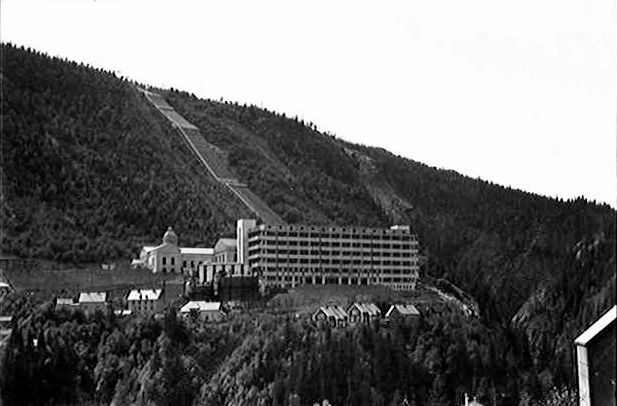|
Stuguflåt Bridge
The Stuguflåt Bridge ( no, Stuguflåtbrua or ) is a stone railway bridge north of Stuguflåten on the Rauma Line over the Rauma River in Innlandet county, Norway. The bridge is long, has a span, and is wide. Work began on the bridge in 1919, and the foundations were laid in autumn 1920, with the walls started by summer 1921. The first rails were laid on 16 September 1921 and were finished on 22 August 1922. The first train crossed in autumn 1922 and materials from this cargo were used to make a permanent snowplough. The Stuguflåt Bridge has been used year round since 1923, and the total cost of the bridge was . In January 1945, Joachim Rønneberg and SOE agents ( Operation Fieldfare) tried to damage the bridge in order to halt the movement by German occupying forces on the Rauma Line. The bridge was reopened three weeks later. [...More Info...] [...Related Items...] OR: [Wikipedia] [Google] [Baidu] |
DRB Class 52
The Deutsche Reichsbahn's Class 52Wartime locomotives classes are prefixed DRB (Deutsche Reichsbahn) to distinguish them from those introduced by the DRG (prefixed DRG), which became defunct in 1937, and those introduced later by the East German Deutsche Reichsbahn (prefixed DR). is a German steam locomotive built in large numbers during the Second World War. It was the most produced type of the so-called ''Kriegslokomotiven'' or ''Kriegsloks'' (war locomotives). The Class 52 was a wartime development of the pre-war DRG Class 50, using fewer parts and less expensive materials to speed production. They were designed by Richard Wagner who was Chief Engineer of the Central Design Office at the Locomotive Standards Bureau of the DRG. About a dozen classes of locomotive were referred to as ''Kriegslokomotiven''; however, the three main classes were the Class 52, 50 and 42. They were numbered 52 1-52 7794. A total of 20 are preserved in Germany. Many locomotives passed into Russian own ... [...More Info...] [...Related Items...] OR: [Wikipedia] [Google] [Baidu] |
Joachim Rønneberg
Joachim Holmboe Rønneberg (30 August 1919 – 21 October 2018) was a Norwegian Army Officer (armed forces), officer and broadcaster. He was known for his Norwegian resistance movement, resistance work during World War II, most notably commanding Operation Gunnerside, and his post-war war information work. Personal life Rønneberg was born in Ålesund, Møre og Romsdal, as the second son of Alf Rønneberg from Ålesund and Anna Krag Sandberg, and a member of the Rønneberg family. He was the brother of Erling Rønneberg, who was a well-known resistance member too, having received British commando training. On the maternal side he was a nephew of Ole Rømer Aagaard Sandberg, and thus a grandnephew of Ole Rømer Aagaard Sandberg (1865–1925), Ole Rømer Aagaard Sandberg, Sr. On the paternal side he was a second great grandson of Carl Rønneberg, and a grandnephew of politician Anton Johan Rønneberg, whose mother was a part of the Holmboe (family), Holmboe family—hence Joach ... [...More Info...] [...Related Items...] OR: [Wikipedia] [Google] [Baidu] |
Bridges Completed In 1922
A bridge is a structure built to span a physical obstacle (such as a body of water, valley, road, or rail) without blocking the way underneath. It is constructed for the purpose of providing passage over the obstacle, which is usually something that is otherwise difficult or impossible to cross. There are many different designs of bridges, each serving a particular purpose and applicable to different situations. Designs of bridges vary depending on factors such as the function of the bridge, the nature of the terrain where the bridge is constructed and anchored, and the material used to make it, and the funds available to build it. The earliest bridges were likely made with fallen trees and stepping stones. The Neolithic people built boardwalk bridges across marshland. The Arkadiko Bridge (dating from the 13th century BC, in the Peloponnese) is one of the oldest arch bridges still in existence and use. Etymology The ''Oxford English Dictionary'' traces the origin of the wo ... [...More Info...] [...Related Items...] OR: [Wikipedia] [Google] [Baidu] |
Railway Bridges In Innlandet
Rail transport (also known as train transport) is a means of transport that transfers passengers and goods on wheeled vehicles running on rails, which are incorporated in tracks. In contrast to road transport, where the vehicles run on a prepared flat surface, rail vehicles (rolling stock) are directionally guided by the tracks on which they run. Tracks usually consist of steel rails, installed on sleepers (ties) set in ballast, on which the rolling stock, usually fitted with metal wheels, moves. Other variations are also possible, such as "slab track", in which the rails are fastened to a concrete foundation resting on a prepared subsurface. Rolling stock in a rail transport system generally encounters lower frictional resistance than rubber-tyred road vehicles, so passenger and freight cars (carriages and wagons) can be coupled into longer trains. The operation is carried out by a railway company, providing transport between train stations or freight customer facili ... [...More Info...] [...Related Items...] OR: [Wikipedia] [Google] [Baidu] |
